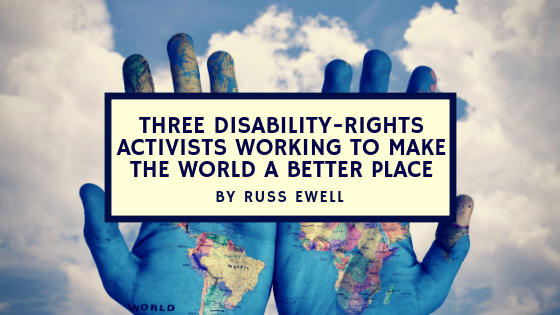A disability-rights activist is someone who works toward the equality, inclusion, and accommodation for people with disabilities. Two of the most well-attended movements that are occurring concurrently include the disability-rights movement and the independent-living movement, which often overlap and share fuel.
This article will spotlight three activists for people with disability who are currently living and working to make the world a better place. Here are some of the most prominent, however it is just a small survey of the many people who are working to make the work more accessible and inclusive.
Taylor is a painted are activist for disability and animal rights who lives in Oakland, California. She is also an educator and has taught classes at the University of California, Berkeley. She was born with Arthrogryposis and is an active member of the Society for Disability Studies. She has received numerous awards for her art, and she uses her mouth to make her art instead of her hands. Her work, according to her artist statement, “explores visual discourses of disability, especially sideshow imagery and medical photography.”
Woodburn is a well known actor, comedian, and activist who has dwarfism. He played Mickey Abbott on the sitcom Seinfeld, which gave him an impressive platform. He serves on the Screen Actors Guild “Performers with Disabilities Committee” and works to avoid stereotyping people with dwarfism. In 2009 he was awarded the DREAM Award by the Disability Rights Legal Center and in 2010 was awarded the Screen Actors Guild Harold Russell Award. He has also visited numerous conferences and organizations as a keynote speaker on inclusion and disability.
Bristo is a well-known disability rights activist who is paralyzed from the chest down. She co-founded the American National Council on Independent Living in 1983, which has grown to a significant force since its conception. It offers a national policy platform that advocates for human and civil rights. It aims to make people more aware of resources available to them and help them find a local center for independent living.
